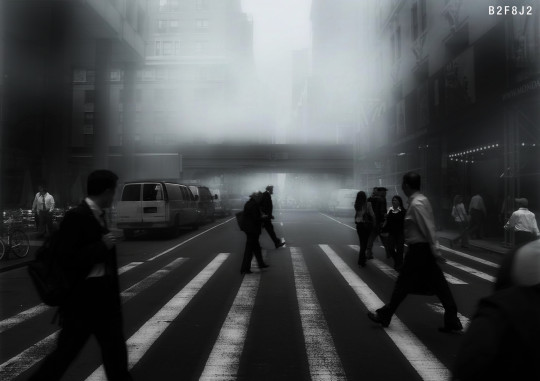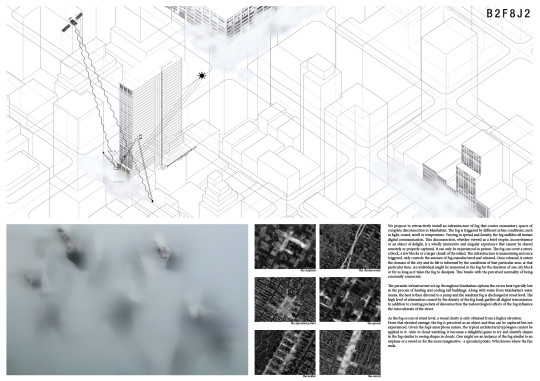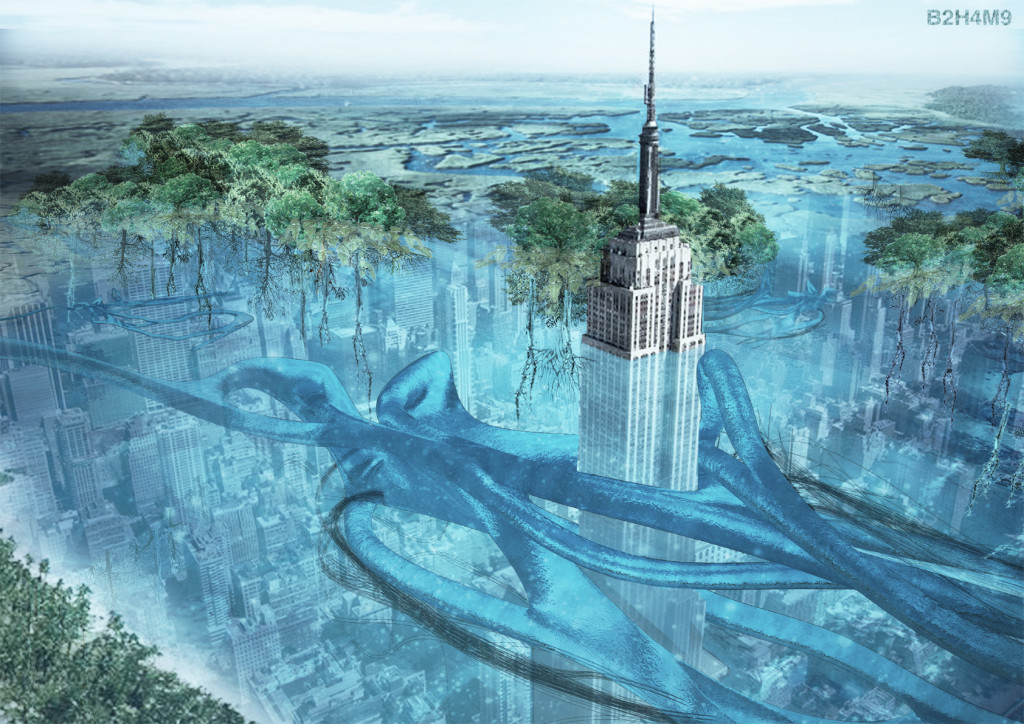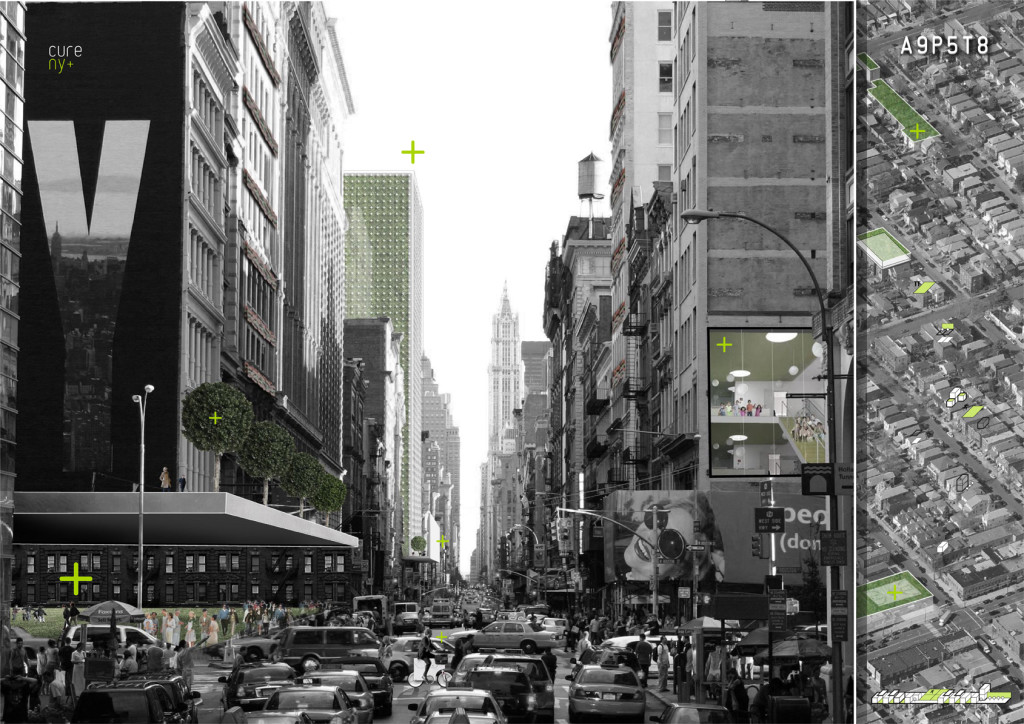Info:
Title: FOG - Code: B2F8J2Contest: NY / 2012
By: A. Tandon - J. Chon
Views: 2926 Likes: 2
Votes:
JOSHUA PRINCE-RAMUS1 EVA FRANCH I GILABERT3 ROLAND SNOOKS2 SHOHEI SHIGEMATSU1 ALESSANDRO ORSINI1 MITCHELL JOACHIM11.5
FOG

 The terms “social” and “networking” have become colloquial jargon that reflect the ongoing eagerness to connect everything and be connected everywhere. This level of connectivity flattens the urban terrain, once composed of multiple boundaries, barriers, and thresholds into a 1-dimensional field. Similarly, an individual who once able to mediate his/her involvement and appearance is conditioned to be constantly tethered to this pervasive network, always visible and available. A tension arises when this culture of connectivity is juxtaposed with New York’s ‘Culture of Congestion’ as the former is in contrast with Manhattan’s almost innate preference of a disconnection between façade and content. This constant connectivity is becoming an uncontended normality in the city. As a contrast to this monopoly, we propose to retroactively install an infrastructure of fog that creates momentary spaces of complete disconnection. The fog is triggered by different urban conditions, such as light, sound, smell or temperature. Varying in spread and density, the fog nullifies all instant digital communication. This disconnection, whether viewed as a brief respite, inconvenience or an object of delight, is a wholly immersive and singular experience that cannot be shared remotely or properly captured. It can only be experienced in person. The fog can cover a street, a block, a few blocks or a larger chunk of the island. The infrastructure is unassuming and once triggered, only controls the amount of fog manufactured and released. Once released, it enters the domain of the city and its life is informed by the conditions of that particular area, at that particular time. An individual might be immersed in the fog for the duration of one city block or for as long as it takes the fog to dissipate. This breaks with the perceived normality of being constantly connected.
The terms “social” and “networking” have become colloquial jargon that reflect the ongoing eagerness to connect everything and be connected everywhere. This level of connectivity flattens the urban terrain, once composed of multiple boundaries, barriers, and thresholds into a 1-dimensional field. Similarly, an individual who once able to mediate his/her involvement and appearance is conditioned to be constantly tethered to this pervasive network, always visible and available. A tension arises when this culture of connectivity is juxtaposed with New York’s ‘Culture of Congestion’ as the former is in contrast with Manhattan’s almost innate preference of a disconnection between façade and content. This constant connectivity is becoming an uncontended normality in the city. As a contrast to this monopoly, we propose to retroactively install an infrastructure of fog that creates momentary spaces of complete disconnection. The fog is triggered by different urban conditions, such as light, sound, smell or temperature. Varying in spread and density, the fog nullifies all instant digital communication. This disconnection, whether viewed as a brief respite, inconvenience or an object of delight, is a wholly immersive and singular experience that cannot be shared remotely or properly captured. It can only be experienced in person. The fog can cover a street, a block, a few blocks or a larger chunk of the island. The infrastructure is unassuming and once triggered, only controls the amount of fog manufactured and released. Once released, it enters the domain of the city and its life is informed by the conditions of that particular area, at that particular time. An individual might be immersed in the fog for the duration of one city block or for as long as it takes the fog to dissipate. This breaks with the perceived normality of being constantly connected.
The parasitic infrastructure set-up throughout Manhattan siphons the excess heat typically lost in the process of heating and cooling tall buildings. Along with water from Manhattan’s water mains, the heat is then directed to a pump and the resultant fog is discharged at street level. The high level of attenuation caused by the density of the fog bank garbles all digital transmission. In addition to creating pockets of disconnection the meteorological effects of the fog influence the microclimate of the street.
As the fog occurs at street level, a visual clarity is only obtained from a higher elevation.
From that elevated vantage, the fog is perceived as an object and thus can be captured but not experienced. Given the fog’s amorphous nature, the typical architectural typologies cannot be applied to it. Akin to cloud watching, it becomes a delightful game to try and identify shapes in the fog similar to seeing shapes in clouds. One might see an instance of the fog similar to an airplane or a sword or for the more imaginative – a sprouted potato. Who knows where the fun ends.






